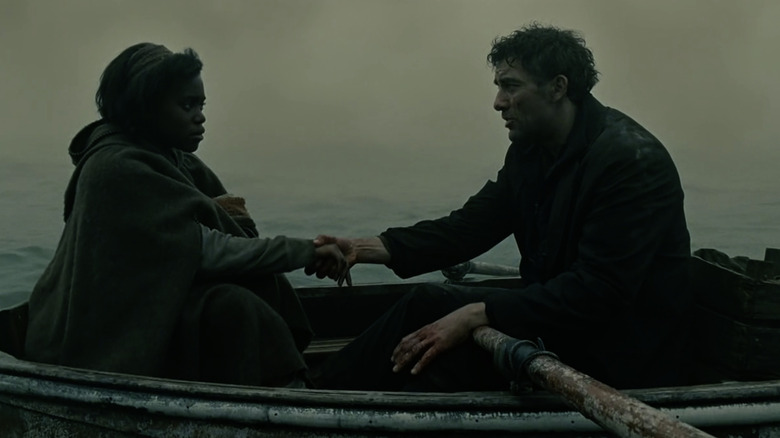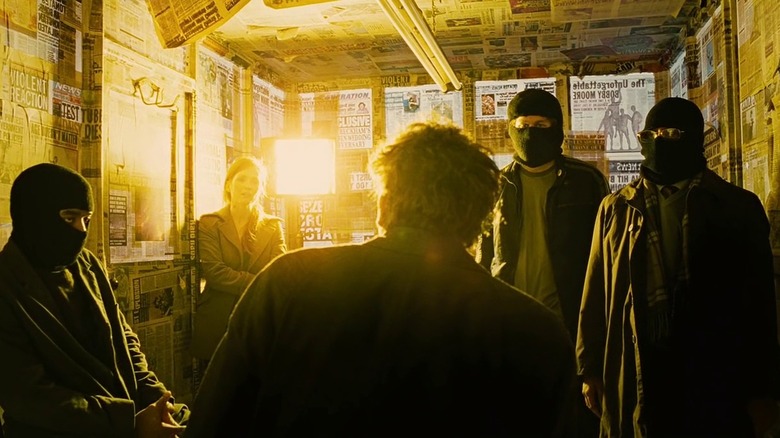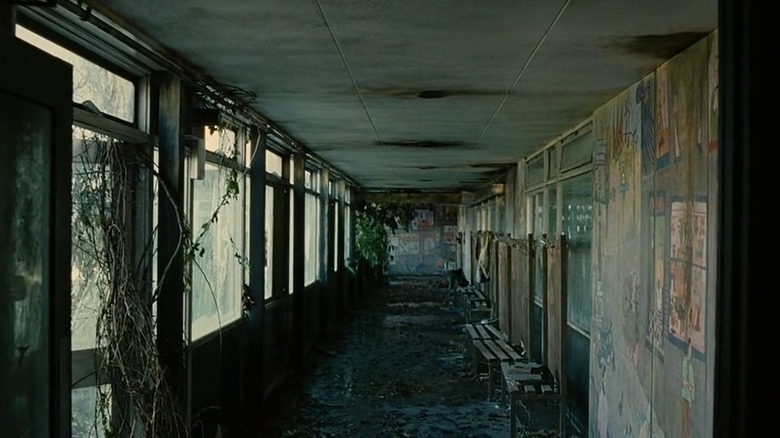Alfonso Cuarón's Philosophy For Children Of Men Carried Over To The Cinematography
"Children of Men," which celebrated its 15th-anniversary last year, is highly regarded as Alfonso Cuarón's dystopian masterpiece. Loosely adapted from PD James's novel of the same name, the film is set in a not-too-distant future where humans have faced total infertility for eighteen years straight. In this war-torn world, the United Kingdom is one of the only nations still standing; a total police state that has completely outlawed immigration.
Working with his regular cinematographer, Emmanuel Lubezki, Cuarón's signature floating camera style is as hypnotic as it is functional. As a filmmaker that's consistently working in different genres and tones, his directorial style is always felt in the way he commands the camera, stuffing as much information into the frame as possible. It's in the wide open beach landscapes of "Y Tu Mamá También," and in this time-distorting way his lens explores Hogwarts through the seasons in "Harry Potter and the Prisoner of Azkaban."
Cuarón's love for the one-shot is always a spectacle to behold, and the technique reaches its apex in "Children of Men." When Coming Soon spoke with Cuarón back around the film's release in 2006, Cuarón revealed that even though the scope is significantly larger than his previous films, his filmic philosophies and impulses were approached the same way.
Alfonso Cuarón's style proves that close-ups aren't everything
Typically, in film, close-up shots are the standard for peering into a character's soul. They allow actors to reach inward and use their eyes to inform the character to their best abilities. Cuarón however, believes there are still other ways to invoke the psychology of a character without resorting to these conventions:
"[Lubezki] and I discussed from the beginning that even though the canvas and the scope was way bigger than 'Y Tu Mamá También,' that this production was going to be the same in the sense that character is as important as social environment. That means that there are no close-ups, everything is seen from a distance."
The big difference between "Children of Men" and Cuarón's previous directorial efforts is that beauty manifests much differently in the film's depiction of 2027 dystopia — instead of the sun-soaked beaches and sunny car rides that put Cuarón on the map, "Children of Men" and its grimy visual style is defined by polluted London streets, war-torn buildings in rubble and disrepair, and any moment of natural beauty is only experienced in short, quiet moments.
It's interesting to see Cuarón's style transform and adapt to different genres and tones. "Y Tu Mamá También" and "Children of Men" both connect the viewer to their protagonists through their conditions and surroundings, the latter focusing on something much more primal and dire. Not only is "Children of Men" immersing the viewer in moments of quiet character drama, it's also coloring their surroundings for the purpose of playing with the audience's survival instincts.
Children of Men finds the odd beauty in total desolation
Another key element of Cuarón's style is his lack of abrasive editing. There are explicit cuts in "Children of Men," as well as "hidden" cuts connecting the longer takes together, but Cuarón uses them sparingly for full control over the film's immersion and pace. It's vital for the film's language that the audience gets to live and breathe with these characters, only being pulled away from moments when it's necessary to move the story along.
"We are trying to avoid editing seeking for an effect. Rather than that, we tried to create moments of truthfulness and to have the camera registering that moment of truthfulness," Cuarón said. "So that was the core of everything, let's try to create the moment of truthfulness and the camera has to be just serving that moment."
2027 is not that far away from us, and while we're not exactly at the point of societal desolation seen in "Children of Men" yet, the film remains as topical and harrowing today as it was in 2006. Though we've seen many similar dystopian films since, Cuarón and Lubezki's stylistic stamp on this particular film is what will keep it significant for years to come.


